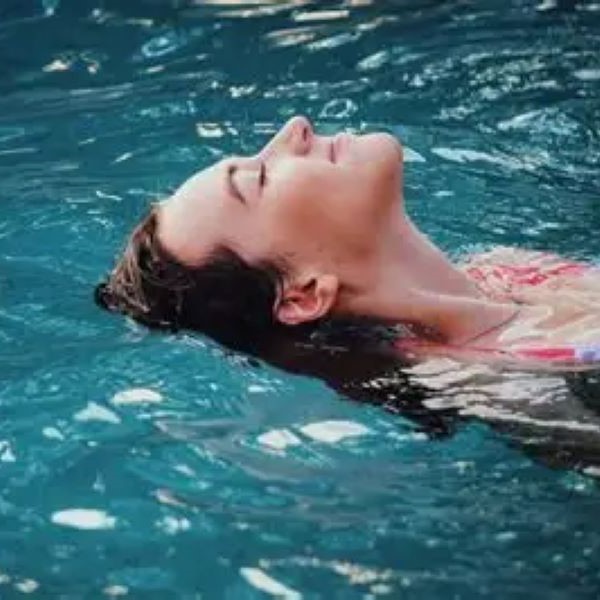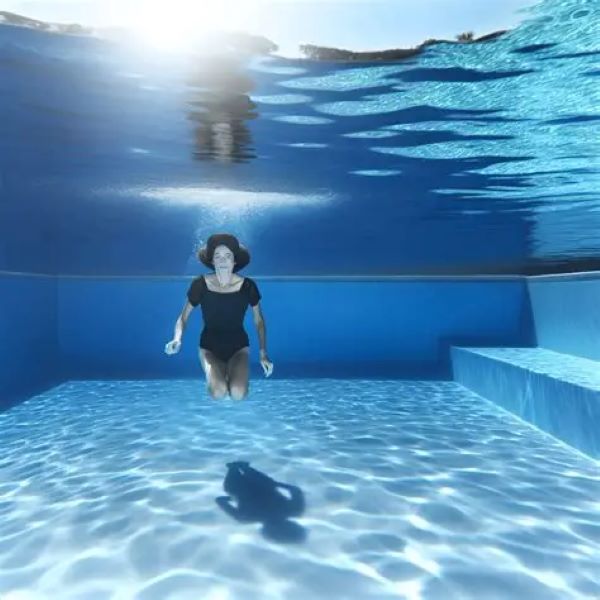Swimming on your period is not only possible, it’s a safe and enjoyable way to stay active during your cycle. Many women worry about leaks, discomfort, or embarrassment, but with the right tools and knowledge, these concerns are easily managed.
In fact, swimming can help relieve period symptoms like cramps and bloating. The water’s buoyancy supports your body and reduces pressure on the abdomen. This often leads to less pain and improved mood.
You do not need to cancel swim practice, beach trips, or pool days because of your period. Millions of women swim every day while menstruating. They use tampons, menstrual cups, or period-proof swimwear to stay protected.
Moreover, chlorine in pools does not increase infection risk. Nor does water stop your flow completely—it only slows it temporarily due to water pressure. Once you’re out, your normal flow resumes.
There is no medical reason to avoid swimming on your period. In many cultures, menstruation has been unnecessarily stigmatized. But modern science and hygiene products make swimming accessible for everyone.
With proper preparation, swimming on your period can be just as comfortable as any other day.
 Can You Swim Safely While Menstruating?
Can You Swim Safely While Menstruating?
Yes, you can swim safely while on your period. The key is using a reliable internal product that prevents leaks. External pads are not suitable for swimming. They absorb water and become ineffective.
Tampons are the most common choice. Insert one before entering the water. Choose the lowest absorbency needed—light or regular—for comfort and safety.
Menstrual cups are another excellent option. They hold more fluid than tampons and can last up to 12 hours. Many users find them more secure and eco-friendly.
Period-proof swimwear is growing in popularity. These swimsuits have built-in absorbent layers. They work best for light flow days or as backup protection.
Always change your product after swimming. Bacteria can grow if left too long. Shower before and after to maintain hygiene.
There is no increased risk of sharks or infections. That myth has been thoroughly debunked. Sharks are not attracted to menstrual blood in real-world conditions.
Ultimately, your comfort and confidence matter most. With the right method, swimming on your period is completely safe.
Best Products for Swimming on Period
Choosing the right product makes all the difference when swimming on your period. Tampons remain a top pick. They are easy to find and simple to use. Always insert a fresh one before getting in the water.
Look for tampons with applicators for easier insertion. Some brands offer compact sizes designed for active lifestyles. Change them every 4 to 8 hours.
Menstrual cups offer longer wear time. Made from medical-grade silicone, they form a seal inside the vagina. They collect rather than absorb fluid. This means fewer changes and less dryness.
Popular brands like DivaCup, Lena Cup, and Saalt are widely trusted. Boil them between cycles for sterilization. Practice inserting and removing at home first.
Period swimwear from brands like Thinx, Knix, and Modibodi includes leak-resistant fabric. These suits hold small amounts of flow. They work well for spotting or light days.
Some women combine methods. For example, a tampon with period swimwear adds extra security. This dual approach eases anxiety about leaks.
Avoid pads, panty liners, or cloth pads in water. They soak up pool or ocean water and lose their function.
 How to Prevent Leaks While Swimming on Period
How to Prevent Leaks While Swimming on Period
Preventing leaks starts before you enter the water. Insert a fresh tampon or menstrual cup with clean hands. Make sure it’s placed correctly.
For tampons, check that the string hangs freely outside. If it tucks in, the tampon may not be fully inserted. This increases leak risk.
Menstrual cups should pop open once inside. Rotate them slightly to ensure a proper seal. Run a finger around the rim to confirm placement.
Change your product shortly after swimming. Even if it’s not full, moisture can introduce bacteria. This raises the chance of irritation or infection.
Use darker-colored swimsuits if you’re nervous. Navy, black, or patterned suits hide minor stains better than white or bright colors.
Stay hydrated and avoid caffeine. Dehydration can worsen cramps. Caffeine may increase bloating and discomfort.
If you feel flow starting in the water, exit calmly. Use the restroom to change your product. There’s no shame in taking care of your body.
Confidence grows with experience. Most leaks happen due to improper fit—not because swimming is unsafe.
Debunking Common Myths About Swimming on Period
Many myths discourage women from swimming on their period. One common belief is that sharks will attack if they smell menstrual blood. However, scientific studies show this is false. Shark attacks linked to menstruation are extremely rare.
Another myth claims water stops your period. It doesn’t. Flow may appear to pause due to water pressure. But once you leave the water, it resumes normally.
Some think swimming increases infection risk. In reality, clean pools and natural bodies of water pose little danger. Chlorine kills most bacteria. Just shower afterward and change your product.
People also say cramps get worse in cold water. But many find relief instead. Cold can reduce inflammation and numb pain. Warm water, like in hot tubs, helps relax muscles.
There’s a misconception that periods are “dirty” or unhygienic. This stigma has no basis in science. Menstrual blood is a natural bodily fluid. Millions swim safely every month.
Finally, some believe only certain products work. But tampons, cups, and period swimwear all offer effective solutions. Choice depends on personal comfort.
By understanding the facts, more women can enjoy swimming on their period without fear.
 Tips for Staying Comfortable in the Water During Your Period
Tips for Staying Comfortable in the Water During Your Period
Comfort begins with preparation. Pack a waterproof bag with spare products, wipes, and a change of clothes. Being ready reduces stress.
Choose a swimsuit that fits well. Loose fabric can shift and reveal strings. High-waisted or sport-style bottoms offer more coverage and support.
Eat a light snack before swimming. Low blood sugar can worsen fatigue and cramps. Bananas, nuts, or yogurt provide energy and potassium.
Warm up slowly. Gentle stretches or floating help ease into movement. Avoid sudden dives or intense laps at first.
Listen to your body. If you feel dizzy, tired, or uncomfortable, take a break. Sit by the pool or walk in shallow water.
Practice deep breathing. This calms nerves and improves oxygen flow. It also helps manage pain naturally.
Bring a water bottle. Hydration reduces bloating and supports circulation. Avoid sugary drinks that cause energy crashes.
Most importantly, focus on fun. Play games, float, or swim with friends. Distraction often lessens discomfort.
How Swimming Can Actually Help Period Symptoms
Swimming offers real benefits during your period. The water’s buoyancy lifts your body. This reduces pressure on the lower back and pelvis. As a result, cramps often feel less intense.
Movement increases blood flow. This delivers oxygen to muscles and organs. Improved circulation can shorten period duration and reduce bloating.
Exercise releases endorphins. These natural chemicals improve mood and reduce stress. Many women report feeling happier after a swim.
Water pressure gently compresses the abdomen. This can minimize swelling and prevent fluid retention.
Swimming is low-impact. Unlike running or jumping, it doesn’t jolt the uterus. This makes it ideal for sensitive days.
Even light activity helps regulate hormones. Over time, regular swimming may lead to lighter, more predictable cycles.
Cold water can constrict blood vessels. This may reduce heavy flow temporarily. Warm water, like in heated pools, relaxes muscles and eases tension.
Instead of resting, try swimming on your period. You might discover it’s one of the best things you can do.
 What to Do Before and After Swimming on Period
What to Do Before and After Swimming on Period
Preparation ensures a smooth experience. First, insert a fresh tampon or menstrual cup before arriving at the pool. Do this in a private bathroom.
Pack essentials in a small bag. Include wipes, a spare product, a towel, and a plastic bag for used items. Discreet disposal matters.
Shower before entering the pool. This removes sweat and oils. It also helps you feel fresh and confident.
After swimming, change your product immediately. Moisture creates a breeding ground for bacteria. This can lead to irritation.
Rinse off with clean water. Remove chlorine or salt from your skin and hair. Use mild soap if needed.
Drink water and rest. Rehydrate to flush out toxins and reduce bloating.
Track how your body responds. Note any changes in flow, pain, or energy. This helps you plan future swims.
Over time, you’ll learn what works best for your body.
Frequently Asked Questions About Swimming on Period
Can I swim on the first day of my period?
Yes, if you use a tampon or cup. Flow varies, so start with extra protection.
Will my period show in the water?
No, blood disperses quickly and isn’t visible. Others won’t know.
Is it safe to swim in lakes or oceans?
Yes, as long as the water is clean. Natural bodies of water don’t increase infection risk.
Can I use a pad while swimming?
No, pads absorb water and stop working. Use internal products instead.
Do I need to change my tampon right after swimming?
Yes, change it within an hour. This maintains hygiene and comfort.
Can swimming make cramps worse?
Not usually. Most women find relief due to water pressure and movement.
Are there special swimsuits for periods?
Yes, period-proof swimwear has built-in absorbent layers for light flow.
Can teenagers swim on their period?
Absolutely. With proper products and support, it’s safe and empowering.
 Final Thoughts on Embracing Activity While Menstruating
Final Thoughts on Embracing Activity While Menstruating
Swimming on your period should never be something to avoid. With the right tools and mindset, it becomes a source of strength and freedom. Millions of women swim every month without issues.
Whether you’re training for a competition, enjoying a beach vacation, or simply cooling off, your period doesn’t have to stop you. Modern products make protection easy and discreet.
More importantly, staying active improves how you feel. Exercise reduces pain, boosts mood, and increases energy. Swimming combines all these benefits in a gentle, enjoyable way.
Society has long treated menstruation as a limitation. But the truth is, your body is designed to function throughout your cycle.
So next time you’re planning a swim, don’t hesitate. Prepare well, choose the right product, and jump in with confidence. Because swimming on your period isn’t just possible—it’s empowering.